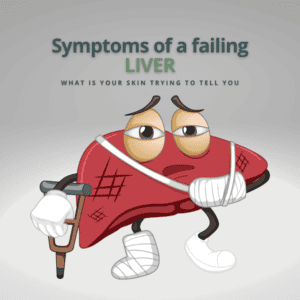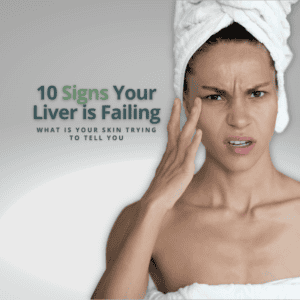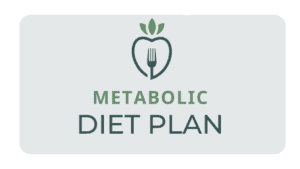10 Symptoms Of A Failing Liver
Warning Sign Of A Failing Liver
If your forehead is always oily and you are looking for skin care products or treatments to address open pores, I encourage you to keep reading.
Your liver might be trying to tell you something.
When your skin is described as oily, you shouldn’t overlook these symptoms as just your skin type.
You should instead consider fatty liver damage.
A fatty liver occurs when fat deposits build up in the liver, causing cirrhosis and fibrosis. Fluid buildup and liver inflammation impair the liver’s function.
When untreated, it can lead to acute liver failure or an enlarged liver.
To effectively address fatty liver symptoms, it is best to familiarise yourself with the most common types of liver-related conditions so you can understand how important the symptoms of a failing liver are.
Alcohol-Related Fatty Liver Disease
The most common liver disease is due to too much alcohol or excessive alcohol consumption.
This results in alcohol-related fatty liver disease (AFLD) or alcoholic liver disease (ALD).
AFLD is directly related to drinking alcohol and there are various degrees of severity, ranging from mild fatty liver to alcoholic hepatitis and cirrhosis.
Some people with AFLD have no symptoms, while others experience fatigue and abdominal discomfort.
Non-Alcoholic Fatty Liver Disease
Non-alcoholic fatty liver disease (NAFLD) is becoming a relatively common condition that affects people who do not drink excessive amounts of alcohol.
It is often associated with obesity, insulin resistance, high cholesterol and diabetes but not always.
People can be within normal weight and not have common symptoms of poor metabolic health and yet have an acute fatty liver, which, without understanding the clues your skin health gives you, can lead to chronic liver failure.
As with AFLD, NAFLD can be easily reversed if caught in its early stages, but if left untreated, it can lead to more serious poor metabolic conditions such as insulin resistance, type 2 diabetes, and metabolic syndrome.
A healthy liver contains little to no fat.
Up to 1 in 3 UK adults are said to be in the early stages of NAFLD, which means there’s a small amount of fat in the liver
In addition to this, NAFLD can increase a person’s likelihood of developing conditions such as chronic liver disease, digestive and kidney diseases, high blood pressure and diabetes.

Liver Fibrosis
Liver fibrosis is the early phase of serious liver disease. It is technically one of the later stages of NAFLD.
This stage of liver disease is diagnosed when inflammation, which causes scar tissue around the liver and nearby blood vessels, is found.
At this point of the disease, the liver can still function but not as well as it once did.
Cirrhosis
Cirrhosis is the last stage of NAFLD and tends to be the most well-known stage of the disease. It occurs when the liver shrinks and becomes scarred and lumpy.
This damage is permanent and can lead to liver cancer or liver failure if left untreated.
There are ways to manage the condition, but as many people know, the most effective form of treatment is a liver transplant.
Both liver fibrosis and cirrhosis take years to develop, but by spotting the early signs of NAFLD and making changes to your lifestyle, you can avoid serious liver disease.
Fatty Liver Problem Symptoms
You must look out for these skin-related symptoms to identify and treat your fatty liver.
Some of these symptoms aren’t inherently dangerous, but by being aware of them, you can reduce your risk of developing nonalcoholic fatty liver disease.
1. Spots Between Eyes And On The Temples
When you experience spots and congested skin between your eyes and on your temples, it can indicate poor liver function.
Congestion is characterised by dull, rough, bumpy and generally spotty skin and is a common feature of face mapping diagrams.
Face mapping is an ancient technique that links areas of the face to specific organs and systems within the body.
According to this method, spots between the eyebrows are linked to the liver and indicate a toxic buildup in this area.
2. Oily Forehead Or Deep Wrinkles
When your liver is functioning well, it allows your body to get rid of excess fat through your digestive system instead of your skin.
Your skin often picks up the slack when your liver isn’t at its best, and impurities leave the body through your skin as sebum.
As well as making the skin oily, poor liver function can cause the skin to become dry too.
For those with sensitive or dry skin, this can cause further irritation, such as itchy skin, leading to flare-ups of conditions like eczema, rosacea and psoriasis.
3. Puffy Eyes
Puffy skin around the eyes points to poor lymphatic drainage.
The liver and kidneys are responsible for filtering out toxins, but if the liver is overloaded or underperforming, it can lead to a buildup of toxins.
When this happens, the body tries eliminating these toxins through other means, such as the skin.
This can cause fluid retention in the face and give the appearance of puffy eyes.
For those with fluid retention, it is a common sign of kidney failure, poor liver function is often related to lack of blood sugar control and too much fat in diet.
4. Xanthelasma
Xanthelasma is a condition wherein yellowish cholesterol deposits form near the corners of the eyes.
These deposits predominantly affect women in their forties and above.
Although they are harmless, they are often indicative of wider issues such as high cholesterol and triglyceride levels, which can put you at risk of developing cardiovascular diseases.
5. Yellow Areas Around The Eyes
Jaundice is a yellowing of the skin and whites of the eyes caused by an excess of bilirubin in the body.
Bilirubin is a waste product produced when red blood cells are broken down.
A healthy liver can filter out this waste, but an unhealthy liver cannot.
Bilirubin is meant to move from the liver to the bile ducts for your body to excrete, but when this doesn’t happen, it can make your eyes and the areas around them appear yellow
6. Itchy Feet And Hands
Feeling a little itchy occasionally isn’t a cause for concern, but experiencing this sensation over long periods can indicate that your liver isn’t functioning as it should.
Your entire body, or specific areas, might be affected, but this symptom isn’t something everyone with liver disease experiences.
When paired with other concerns, it’s something you should consider a sign that fat is in your liver.
7. Rosacea Or Psoriasis
The presence of rosacea or psoriasis indicates that the body is not absorbing fat-based vitamins as well as it could be.
People with NAFLD and metabolic syndrome also have a much higher chance of suffering from these skin conditions.
Liver enzymes are required to metabolise fat-based vitamins, but liver scarring reduces the body’s ability to absorb and use these vitamins.
This can lead to symptoms such as rosacea or psoriasis.
8. Red Palms
Pink or red patches on either side of your hands that aren’t itchy or painful are likely to be a condition called palmar erythema.
These patches will disappear if you apply pressure to them.
Palmar erythema is caused by dilated capillaries and blood vessels under the skin, which causes patches of redness/discolouration.
Several health conditions, such as liver disease, thyroid disease (hypothyroidism and hyperthyroidism), and autoimmune disease, could explain the occurrence of palmar erythema.
Red palms have also been attributed to metabolic syndrome and NAFLD and, therefore, a symptom of poor liver function.
9. Spider Veins
Spider veins can be caused by a build-up of fat in the liver. This fat build-up causes blood to flow slowly or to clot, which impacts blood pressure and leads to the formation of spider veins.
You might have spider veins for many other reasons, and they are much more likely to form with age.
If you are diabetic, have an increased risk of having a heart attack, or have any other form of metabolic health concern, these are risk factors that lead to liver failure.
10. Dark Knuckles Or Dark Skin Near The Knuckles
If you have dark, velvety patches of skin, you probably suffer from acanthosis nigricans (AN).
These dark patches of skin typically appear on areas of the body that crease or fold, like the knuckles, neck, elbows, armpits or groin area.
AN is the result of rapidly reproducing skin cells and is often associated with the early stages of liver disease due to the overproduction of hormone production such as insulin, cortisol and estrogen.
Common conditions that affect hormone levels are crushing syndrome, polycystic ovary syndrome, or an underactive pituitary gland
In summary
Skin symptoms are often overlooked but can indicate fatty liver disease symptoms
So, if you manage oily skin, have dark knuckles, or have patches on your armpits, these signs may indicate poor liver function.
I’d suggest adding a healthy exercise routine to your daily regimen, which can help improve lymphatic drainage, enhance blood circulation and support liver function.
Reducing alcohol consumption and adopting a balanced diet are key to maintaining good liver health.
With regular check-ups, blood tests and making necessary lifestyle changes, you can keep your liver functioning optimally and maintain overall well
What can you do if you have warning signs of a failing liver
Remember, when it comes to your liver cells – you’re in control!
Understanding what your skin tells you can treat your liver function concerns.
As long as you know how the liver disease presents itself, you can understand when your liver is functioning properly.
Your metabolic health affects your entire body and should be considered a priority.
By reversing any fatty liver damage you may have done to your body before it’s too late, you can improve your metabolic health and liver function with simple lifestyle changes.
NAFLD is not associated with alcohol consumption, but alcohol use will only affect your liver and metabolic health.
Losing weight by eating more nutrient-rich foods, high-fiber foods, amino acids that are lower in saturated fat, and exercising more are also effective ways to improve liver function and overall metabolic health.
What’s next?
Knowledge gives you the power to make simple changes today to your food and lifestyle choices that can boost your motivation and willpower to achieve optimum wellness.
Learning how to change what you eat each day with a simple healthy diet is the secret to longevity in health.
The Metabolic Diet Plan isn’t just another fad. It’s a comprehensive simple healthy eating online course designed for the health-conscious to learn how to reset metabolic pathways by balancing blood sugar to support liver function and optimize your gut health for health and longevity.
Look at yourself and regain control of your health and weight today.
Remember, it’s never too late to change for better future health. It only takes a few weeks of positive events, lifestyle choices, and a healthy diet to feel the benefits of a healthier, more energized you.
In the next article, you will learn about why you have mood swings and bouts of anxiety, as your blood sugars also interfere with your happy hormones resulting in a lack of motivation and willpower to be kind to yourself.
This article is part of my WHY series to help you to identify the symptoms of poor metabolic health.
- Steady Weight Gain
- Why Feeling Fatigued All The Time
- Why do I always FEEL so anxious?
- Why am I CRAVING food so much?
- Why can’t I SLEEP at night?
- Why is my body ACHING all over?
- Why am I SO bloated and have acid reflux?
- Why am I ALLERGIC to everything?
Remember, it’s never too late to change for better future health.
For more information and support on improving your future health longevity, check out my YouTube channel, Health HUB.
On my channel, I will share HOW to free yourself from restrictive dieting and obsessing about weight and know what your body needs for health and longevity to slow down the effects of ageing—naturally!
Visit YouTube Channel – CLICK HERE



